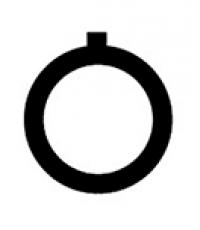Society as a complex system presentation 1 course. Society as a complex dynamic system. Summary of what was learned in the lesson
1 slide
* Society as a complex dynamic system. Sofronova L.V. Municipal Educational Institution Lyceum "Constellation" 131 Samara

2 slide
* Practical conclusions of the studied material. What conclusions can be drawn from the fact that society is a joint activity of people (at least 2 conclusions)? What practical conclusions follow from knowledge about the interdependence of society and the natural environment? Do you think studying social studies at school is important for you?

3 slide
* Plan for learning new material. General concept of a system. Characteristic features of society as a system. Social institutions.

4 slide

5 slide

6 slide
* Are the individual parts of the water meter laid out on a table a system? In what case do the parts of the water meter perform the function of the system?

7 slide
* Conclusion: the properties of a system do not belong to its individual parts, but only to the system as a whole.

8 slide
* Exercise. Read point No. 2 of the paragraph “Features of the social system.” Make a simple plan for this text.

Slide 9
* plan The complex nature of the social system. The presence of elements of different quality in the system. Man is the main element of the social system. Constant change in the social system. Integrative quality of the system as a whole. The social system is self-governing. The environment of society as a system. Functions of the social system.

10 slide
* Exercise. Turn your plan into a thesis by briefly formulating the main points of the text you read. For example. 1. The social system is complex, as it includes many levels, subsystems, and elements.

11 slide
* Society as a system has a complex hierarchical nature; various levels can be distinguished in it in the form of subsystems.

12 slide
* Man is a universal component of social systems; he is certainly included in each of them, from society to family.

Slide 13
* Social institutions. The most important life needs. Basic activities. Main social institutions. The need for reproduction. Family and household activities. Institute of Family and Marriage. The need for security and social order. Political and government activities. Political institutions, state. The need for subsistence. Economic activity. Economic institutions, production. The need to gain knowledge and socialize children. Scientific, educational images. activity. Institutes of science, education, culture. The need to solve spiritual problems. Religious activities Institute of Religion.
Topic 1.2. Society as a complex system
The idea of society as a complex dynamic system.

- Specifics of social relations. Subsystems and elements of society.
- The main institutions of society, their functions.
- Society and nature.

Society - it is a part of the material world isolated from nature with the entire set of historically established forms of joint activity of people .
a whole made up of parts,
totality
System
System allowing
various changes,
development, emergence
new ones, and the dying off of
ry parts and connections
between them
Dynamic
system

Society as a system.
society
Subsystems
Institutes

Subsystems (spheres) is a specific area of social life , including the most sustainable forms of human interaction .
society
economic
social
spiritual
political
subsystems
(spheres)

Main elements and functions
subsystems (spheres) of society.
Subsystems (spheres)
SPIRITUAL
ECONOMIC
POLITICAL
SOCIAL
EXERCISE:
& 2.2 Spheres of society pp. 73-78
Write down: 1) characteristics of the relationship in
each of the spheres of society;
2) elements.

Main elements and functions
subsystems (spheres) of society.
Subsystems (spheres)
SPIRITUAL
ECONOMIC
Includes , exchange , , .
Elements:
Money
SOCIAL
POLITICAL

Main elements and functions
subsystems (spheres) of society.
Subsystems (spheres)
SPIRITUAL
ECONOMIC
Includes : industrial relations , exchange , distribution of wealth , as well as property relations .
Elements:
Money
SOCIAL
Includes:
Elements:
POLITICAL

Main elements and functions
subsystems (spheres) of society.
Subsystems (spheres)
SPIRITUAL
ECONOMIC
Includes : industrial relations , exchange , distribution of wealth , as well as property relations .
Elements:
Money
SOCIAL
Includes: relationships between different groups of society
Elements: specific people and communities of people
POLITICAL
Includes:
.
Elements:
State

Main elements and functions
subsystems (spheres) of society.
Subsystems (spheres)
SPIRITUAL
Includes:
Relationship , arising in the process of creation , development and transmission of spiritual values .
Elements:
Culture
ECONOMIC
Includes : industrial relations , exchange , distribution of wealth , as well as property relations .
Elements:
Money
SOCIAL
Includes: relationships between different groups of society
Elements: specific people and communities of people
POLITICAL
Includes:
The ability of some groups of people and their representatives to influence other groups .
Elements:
State

Institutions of society – a set of norms , rules of conduct in
Institutions of society
SPIRITUAL
FAMILIES
POLITICAL
ECONOMIC
EXERCISE:
& 2. 1 The concept of society pp. 71-72
Write down: 1) characteristics
every institution of society;

Institutions of society – a set of norms , rules of conduct in
a certain sphere of human life .
Institutions of society
SPIRITUAL
FAMILIES
Bound .
POLITICAL
ECONOMIC

Institutions of society – a set of norms , rules of conduct in
a certain sphere of human life .
Institutions of society
SPIRITUAL
FAMILIES
Bound with the reproduction of man as a biological species and its socialization and education .
POLITICAL
Includes .
ECONOMIC

Institutions of society – a set of norms , rules of conduct in
a certain sphere of human life .
Institutions of society
SPIRITUAL
FAMILIES
Bound with the reproduction of man as a biological species and its socialization and education .
POLITICAL
Includes relations in the field of company management .
ECONOMIC
Bound , livelihood .

Institutions of society – a set of norms , rules of conduct in
a certain sphere of human life .
Institutions of society
SPIRITUAL
Bound with satisfaction of human spiritual needs , the emergence and transfer of knowledge to new generations .
FAMILIES
Bound with the reproduction of man as a biological species and its socialization and education .
POLITICAL
Includes relations in the field of company management .
ECONOMIC
Bound with the production of material goods , livelihood .

HOMEWORK:
& 2. 1 page 72 question No. 2
& 2. 2 page 79 question No. 9
To use presentation previews, create a Google account and log in to it: https://accounts.google.com
Slide captions:
society as a dynamic system
Plan. General concept of the system. Characteristic features of society as a system. Main spheres of public life. Social institutions.
General concept of the system. The concept of “system” refers to complex objects, both mechanical, biological, and social. All of them include heterogeneous elements. All these elements, parts of the system are interconnected and interact with each other. The system functions only thanks to this interaction. The properties of a system do not belong to its individual parts, but only to the system as a whole.
Characteristic features of society as a system The complex nature of the social system: many levels, subsystems of elements Society as a system includes elements of different quality - material (classes) and ideal (good people) Man is included in each of the social systems Society is distinguished by dynamism, incompleteness, alternativeness development, because a person sets goals... The integrative quality of the system as a whole: the ability to create conditions for its existence The social system is self-governing, self-sufficient The environment of the society of a certain country as a system is nature, the world community The main functions of the social system: adaptation, goal achievement, maintaining a model, integration
Society is a dynamic self-developing system, because worldview, social values, labor processes, economic and political objectives, religious and moral attitudes, etc. created by people themselves develop over the course of history may differ from each other in different historical eras
Main spheres of public life (subsystems). Economic sphere (basis) – regulates issues of production of property, distribution and consumption of material and spiritual goods. Includes: The relationship of a person to the means of production (to own, use, dispose of) The place of a person in the system of social production (relations of domination or subordination) The method and amount of obtaining a share of social wealth. The nature of activity in the production system (mental, physical, management...)
Main spheres of public life (subsystems). The political sphere is the managerial superstructure of society, which includes politics, state law and their relationship and functioning.
Main spheres of public life (subsystems). The social sphere is a certain way of interaction between people occupying a certain status and performing their roles in accordance with the norms and values accepted in a given social system. Structural formations: classes, social strata of the nation in their relationships and interactions.
Main spheres of public life (subsystems). The cultural or spiritual sphere reflects various forms and levels of social consciousness, which, being embodied in the real life of society, form what is commonly called spiritual culture.
The basis for distinguishing the spheres of social life are basic human needs Basic human needs Material needs Needs for contacts, communication Need for organization, peace, law and order Need for self-realization, increasing goodness, moral improvement Basic spheres of public life Economic Social Political Spiritual
What is the relationship between the main spheres of public life? What are the priorities?
... before engaging in science, art, politics, etc., a person must eat, drink and have a home... Economics Politics Social relations Spiritual life
A person’s thoughts, ideas, ideas precede his practical activities... Social changes are preceded by changes in people’s consciousness. Spiritual life Politics Economics Social relations
A compromise approach: each sphere of public life can become decisive in different periods of public life. Economics Spiritual life Politics Social relations
Social institutions Social institutions are social formations, institutions, norms, cultural patterns of behavior that serve to streamline and regulate relations between people.
Social institutions The need for reproduction Family and household activities Institute of family and marriage, kinship institutions
Social institutions The need for security and social order Political, managerial, government activities Political institutions (state, parties...)
Social institutions Need for livelihood Economic activity Economic institutions (property, division of labor, wages...)
Social institutions The need for obtaining knowledge of socialization, personnel training Scientific, educational, educational activities Institutes of science, education and culture
Social institutions The need to solve spiritual problems of the meaning of life Religious activities Institute of Religion
A social institution arises on the basis of the joint activities of large masses of people; activities aimed at meeting the fundamental needs of society represent stable forms of organization of such activities that have developed historically and are regulated by norms, traditions, and customs.
Organize human activity into a certain system of roles and statuses Include a system of sanctions Organize and coordinate actions Ensure standard behavior The functions of a social institution are hidden, explicit




